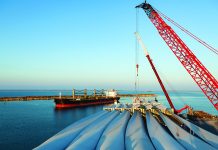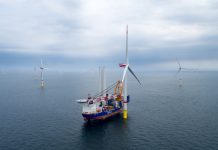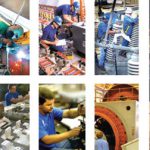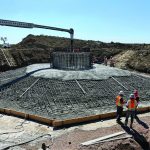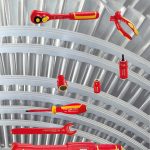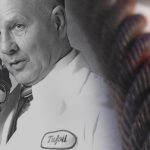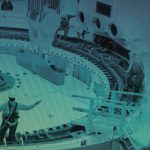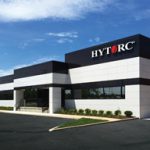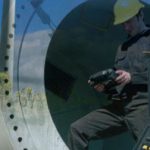What happens when a wind-turbine technician is working at 300-plus feet, and something goes wrong? That tech is going to have to know more than how to turn a wrench. He’s going to have to know what to do in order to keep from getting hurt — or worse.
If that tech has taken a safety course from TEAM-1 Academy, then it’s a safe bet he will be just fine.
The experts from TEAM-1 Academy have been teaching safety courses for two decades, and in that time, it has never had a single injury take place, according to Scott Connor, TEAM-1 Academy’s chief training officer.
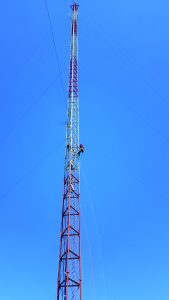
“A lot of government, municipal, fire departments, military, and even enforcement agencies will hire us and say, ‘whatever you are doing to train your guys, we want the same safety record, so teach us what you were teaching them,’” he said.
20 years of experience
TEAM-1 began more than 20 years ago as a training and hazmat response company. It later sold the response part of the business and now focuses on safety training and equipment sales. The company expanded into the wind industry about 10 years later, according to Connor.
“When it comes to wind, we’re the most accredited company in North America for any sort of training,” he said. “We have a few OEMs that exclusively use us for their climb rescue training. We train virtually any height situation including communication towers, transmission towers, bridges, water towers, in addition to wind turbines.”
TEAM-1 is the only company in Canada certified by the Global Wind Organization. TEAM-1 has the ability to conduct GWO and non-GWO custom courses for its clients.
Over that 10 years, TEAM-1 has developed relationships with a wide range of OEMs and site owners in the wind industry, according to Connor.
“A lot of owners just don’t own a single brand of wind turbine; they might own a Siemens, a Vestas, a Mitsubishi, a bunch of different wind farms with different technologies,” he said. “Basically, we’ve been in every type of wind turbine, so it gives us a lot of experience. We get to see different things and how things might work.”
Most common wind courses
Working at heights/rescue: Teaches how to wear and inspect PPE properly, how to climb and use the PPE, and use the Rescue and Evacuation devices.
Confined space entry/rescue: Teaches how to enter confined spaces safely and follow legislative requirements. In some provinces, some areas of the structure are deemed confined spaces.
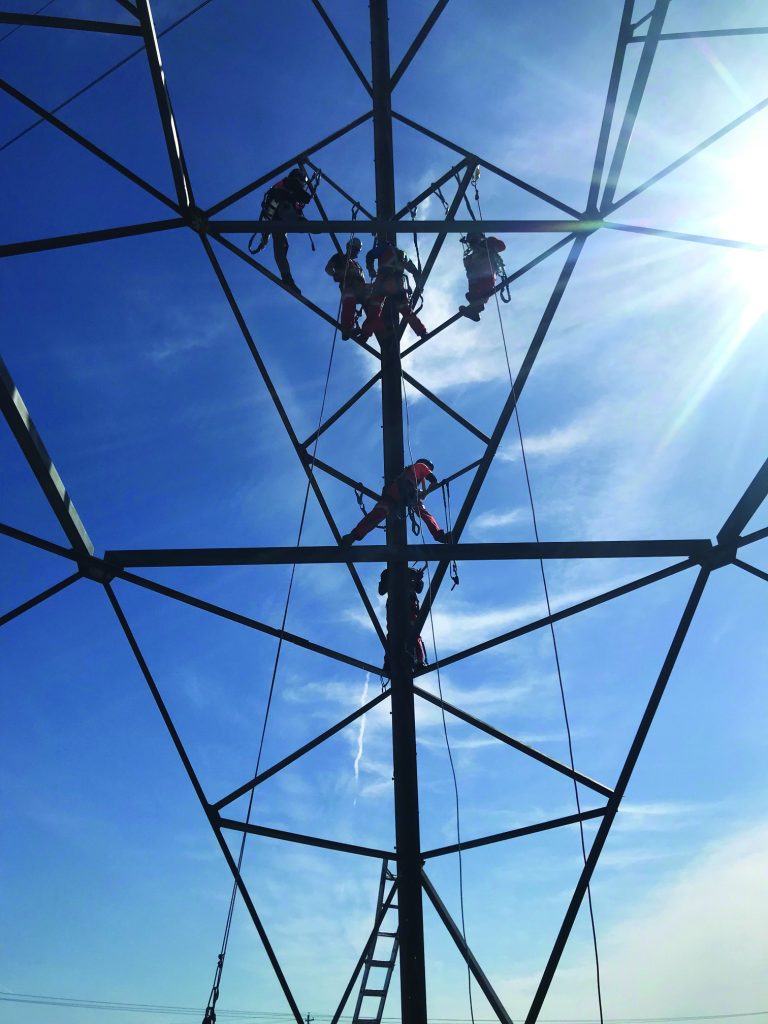
Manual Handling and Fire Awareness: Teaches the proper way to assess and conduct physical lifting and movements to avoid muscular-skeletal injuries. Fire Awareness gives trainees a greater understanding of fire and how to use the fire extinguishers.
First aid: Teaches Red Cross first aid in addition to CPR and AED.
“You’re going to learn how to climb safely and do rescue safely and realize that when you’re part of the rescue team, getting hurt is not an option,” Connor said. “Part of the definition of an organized rescue response is that things stay the same or get better. If I have two or three guys going to rescue one guy, and one of them gets hurt, all they’ve done is double the problem. When you’re doing the rescue, you’ve got to be double safe. The guy hanging there is really the least important person because he’s already hurt; nobody else is hurt yet, and you cannot get anyone else hurt during this rescue. It’s easy to get that tunnel vision where you forget about your own safety. We really focus on rescuer safety.”
TEAM-1 has 16 instructors who conduct more than 1,200 courses a year, according to Connor, and 95 percent of those courses are taught at the customers’ sites.
“It’s a lot easier for the customer in many cases to have our instructors do on-site training,” he said. “It’s kind of nice to do it on a company site, because you’re teaching them on their spaces at their heights for their situations.”
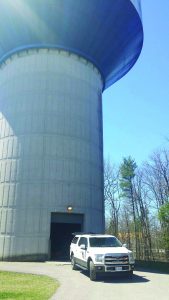
Keeping it simple
A big part of TEAM-1’s approach when it comes to training is to keep it as simple as possible while still maintaining the crucial safety elements.
Part of that simplicity is to ensure trainees have equipment that is easy-to-use and functional.
About eight years ago, TEAM-1 added product sales to its resume. It seemed like a logical extension of the company’s services since TEAM-1’s experts have such extensive knowledge about the proper safety equipment to begin with, according to Connor.
“We sell medium to high-end, really nice harnesses and rescue equipment by all the major manufacturers,” he said. “We have a full catalog, and we carry stock of most every item.”
And when dealing with wind, the rescue devices have to have simple operation since rescue is not their main job.
Level of training
“When it comes to rescue devices, you really try to match the level of training,” Connor said.
For instance, Connor said that if a company puts its employees through training once a year or every two years, the last thing they need is a complicated evacuation device or rescue device, because in six months, they’re going to forget how to use it. The key is leaving them with the easiest options.
“When we train a fire department, they’re going to get trained to a technician-expert level,” Connor said. “I can give them a rope; they’re going to have to tie their own knots and hitches, and they’re going to have to be able to install it in a rescue device in the proper direction. But you know what? Every single day they go to work, that’s their job, so it’s not a big deal. Whereas, if I’ve got a job working at a wind farm 365 days a year, my main job is working on wind towers. I have to take one day of safety and climb training, so whatever they give me, it better be as simple as possible.”
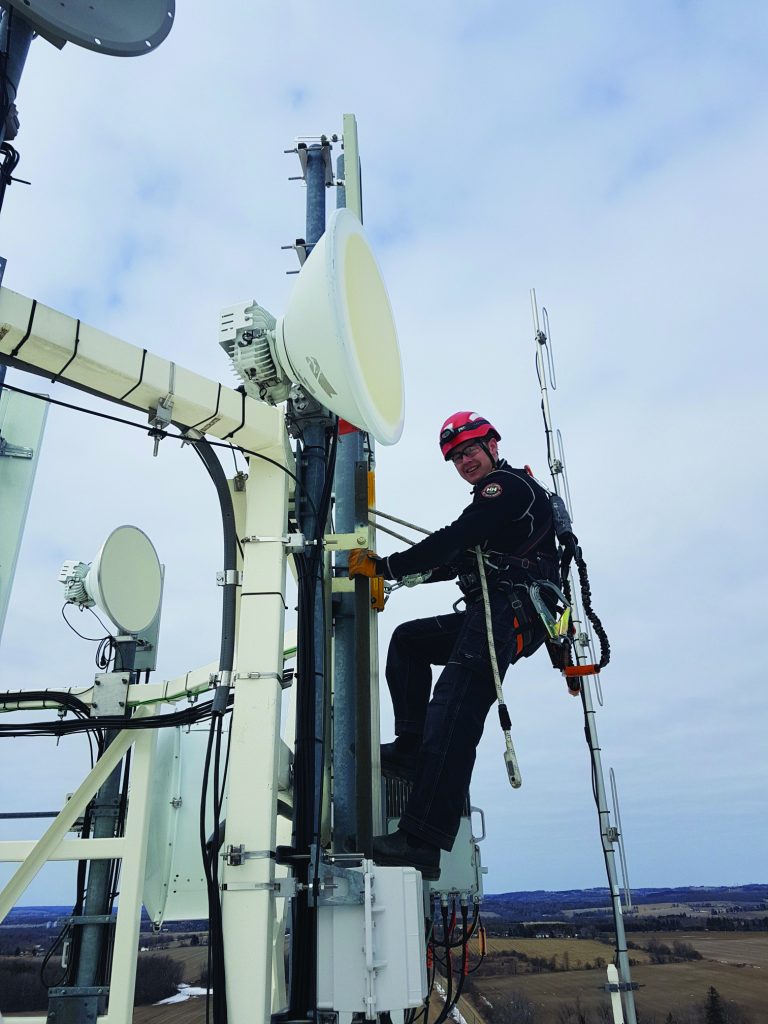
The simpler devices may cost more, but ultimately what you save in time training — as well as the peace of mind — is worth it, according to Connor.
“To buy a really nice safety-proof type of device, you might spend $2,000 to $3,000,” he said. “But, in a day, you can have a guy be very well versed on it. If I were a manager of a site, I’d never lose any sleep that this guy would remember it in an emergency rescue or evacuation situation. And the guys are trained in a day. Many times the cost of the rescue/evacuation device seems to be the main concern when every day spent at certified training is a great cost, too. If you’re going to put six people in a class for a day, you’re paying six wages for a day. But if I buy a cheaper, say $1,000 device, that’ll work, but it’s more complicated and may require several days of training. That means you’ll spend two or three days to get them to be competent. You’re better off spending two to three grand on as foolproof device as you can, and you’ll probably make up for it in wages.”
Basically, a device can be matched with the amount of training a customer has budgeted, according to Connor.
“These wind-farm owners aren’t making money when their guys are sitting in class,” he said. “They’re making money when they’re out there turning wrenches. You don’t want to skimp on the safety training either, but you don’t want them to have unnecessary costs, and we can really help them with that regard.”
TEAM-1 offers a selection of different rescue and evacuation devices, and since the company’s instructors are familiar with most every type of turbine, TEAM-1 can give them advice on which ones work better with which turbine, according to Connor.
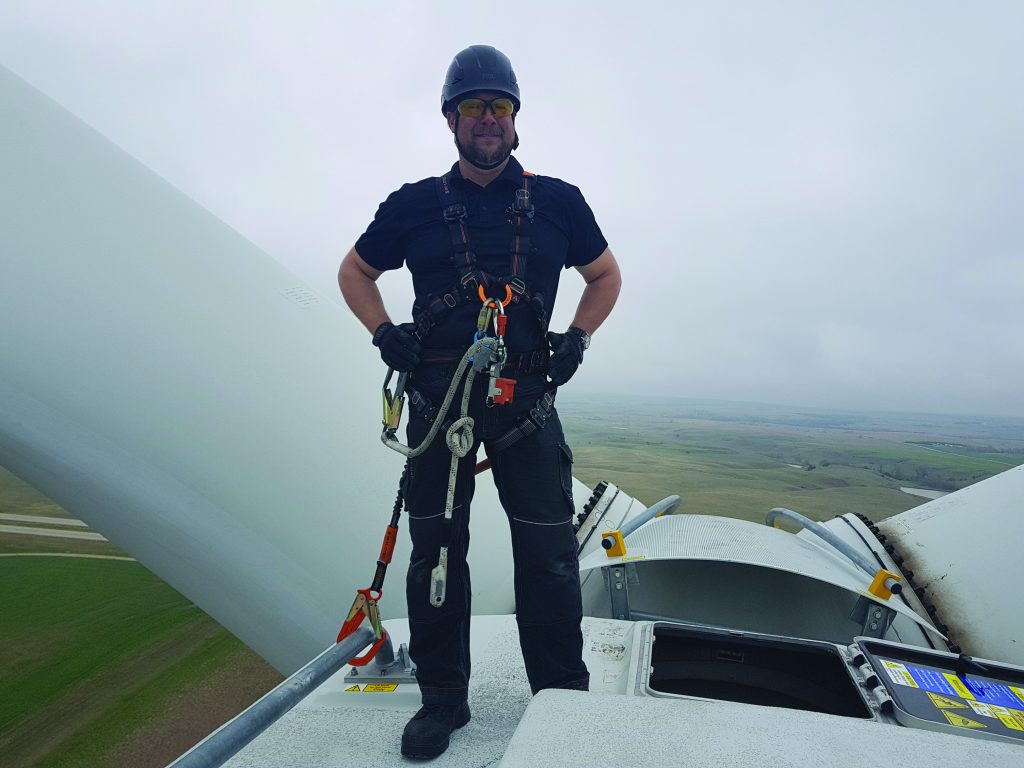
Authorized distributor
Another advantage TEAM-1 has with its products is the company is an authorized distributor of all the major brands, he said.
“We keep them in stock, and we keep in stock the newest stuff,” Connor said. “All the manufacturers make a point of visiting us or having us to their location to ensure we know how to use their gear and what the limitations are.”
That means customers are getting firsthand knowledge of the products.
As offshore wind continues to gain a foothold in North America, Connor said he expects TEAM-1 to follow suit with that.
“We’d definitely be willing to go work on those,” he said. “A lot of places want continuity. If it’s the same company, they want the same course being taught. We have a core group of guys who practice together and train together. We’re all teaching the exact same way.”
To enter the offshore market, TEAM-1 would need to include a sea survival component, which Connor said he is already preparing for.
“If we see a market over here for offshore wind turbines, it will definitely be a prerequisite,” he said.
Beyond the course
Whatever training TEAM-1 offers both now and in the future, one of the company’s pledges is to make sure its trainees have plenty of time to ask questions if they’re unsure of something, according to Connor.
“We always let them know training doesn’t finish at the end of the training session,” he said. “If you have any questions after the course, you just get a hold of us, and we’ll go find an answer for you. When you find yourself 300-plus feet above the ground with an emergency, that’s not the time to ask a question.”

















